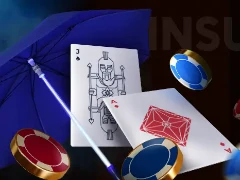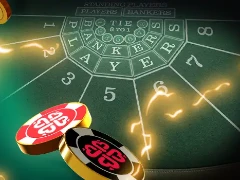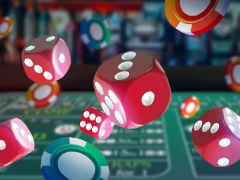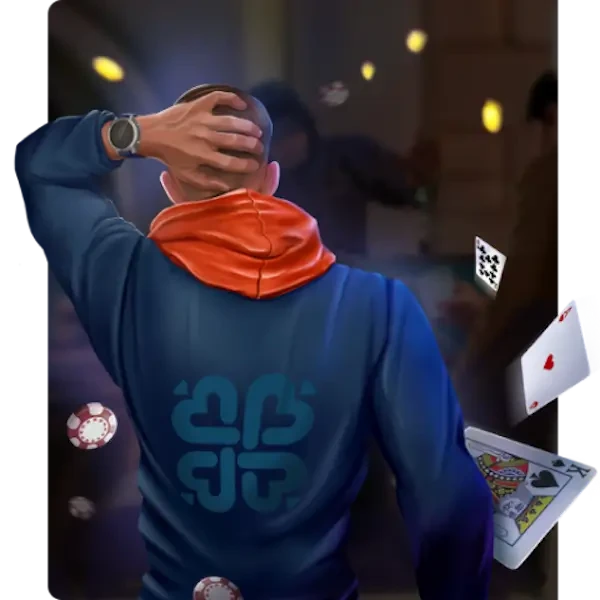How to Count Cards in Blackjack and Minimise House Edge
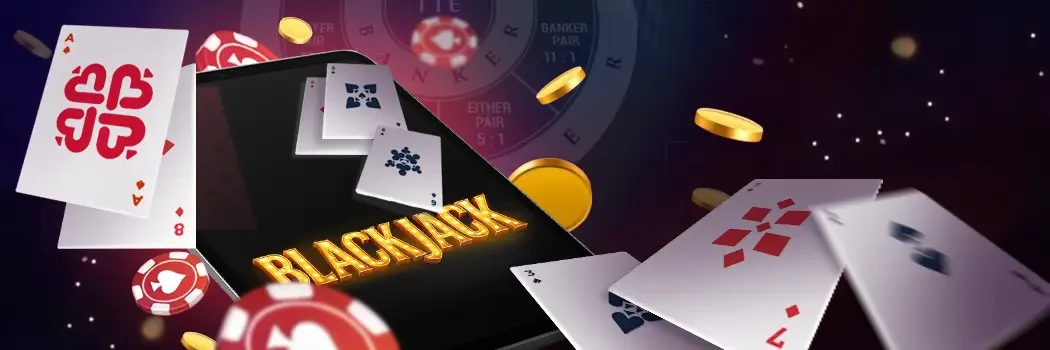
In Blackjack card counting is one of the skills that can give a punter a certain edge during gameplay. We've gathered perspectives from casino managers, professional counters, and mathematicians who study advantage play and who will help you understand all the ins and outs of proper tracking. This guide walks readers through what counting cards really is and how it works. Explains which strategy actually works best for different players based on comparison.
What is Card Counting in Blackjack?
Basically saying it is a method that allows an individual to track cards. Low cards (2–6) give the dealer the upper hand, while high cards (tens and aces) do the same for the punter. When most high cards are gone, and the deck runs heavy with low remaining cards, the house gains ground.
Counting cards in blackjack works because, unlike slot machines, it has memory. The cards you've already seen directly affect your odds on the next hand.
Experienced players and our research team agree on one thing: the edge in the game comes not from magic. It arises from probability mathematics that casinos sometimes allow to exist.
Card Counting Systems for Blackjack Beginners
Over two dozen techniques to count cards in BJ have emerged over time, but not all of them suit novices. We recommend beginning with the High-Low system, and there's a good reason why. It's been around since the 1960s, used by countless successful players, and remains the foundation for more advanced methods.
How Does the High-Low System Work?
A person should just add and subtract simple numbers. They match card denominations in a pre-determined pattern. The actual assignment system looks like this:
| Rank | Cards | Value |
|---|---|---|
| Low | 2–6 | +1 |
| Neutral | 7–9 | 0 |
| High | 10–Ace | -1 |
It is better to explain by way of example so that newbies understand how to count cards in blackjack with the Hi-Lo method in use.
Example: A shoe of six decks is being dealt. You begin with a zero in each new game.
- In the first hand, Player 1 receives 5. Player 2 gets 2. The dealer has a King to demonstrate, and Hero’s random card is 7. Time to do a little math: 5 is +1, 2 is +1, King is -1, 7 is 0. Your running count is now +1.
- The next hand unfolds quickly. The set to analyse is: 9, 9, Ace, 4, 10, and 6. Tracking scheme is the same: 9 is 0, 9 is 0, Ace is -1, 4 is +1, 10 is -1, 6 is +1. Hero’s +1 count remains unchanged after new calculations.
This method of counting cards blackjack is popular because it works without demanding photographic memory or advanced math skills.
How to Count Cards in Blackjack by True Count?
This concept is pretty easy to grasp after you know about down counting. Figure that out by dividing the running count by how many decks are still in the card holder thing. Like this:
- Running count: +8
- Decks remaining: 2
- True count: +4
This adjustment helps you understand whether the remaining deck(s) are really good for you or just medium.
Advanced Blackjack Card Counting Schemes
When players feel comfortable with basic methods and have logged real table hours, they can move to more powerful blackjack card counting systems. These demand more mental effort but reward you with superior information about the deck.
Knockout System and How It Works
This method was actually created by a team of players specifically to handle the chaos and time pressure of real casinos. The insight was clever: remove the true count division step, and you reduce mental load dramatically. How it works:
- Cards 2-7: +1
- Cards 8-9: 0
- Cards 10-Ace: -1
Notice that 7 shifted from zero to +1 compared to High-Low. This change means you don't need to divide by the remaining decks in most situations.
Zen Count and How It Works
For experienced players who've practised extensively, this card counting blackjack strategy offers noticeably better accuracy. How it works:
- Cards 2-3: +1
- Cards 4-6: +2
- Cards 7: +1
- Cards 8-9: 0
- Cards 10-Ace: -2
This system captures much finer detail from the deck composition.
Comparison of Popular Card Tracking Methods
Here is a table showing how different card counting systems used at BJ tables compare:
| System | Difficulty | Accuracy | Speed | Best For |
|---|---|---|---|---|
| High-Low | Easy | Good | Fast | Beginners, casual play |
| Knockout | Medium | Good | Medium | Real casino environment |
| Zen Count | Hard | Excellent | Slow | Serious players |
| Omega II | Hard | Excellent | Slow | Maximum advantage |
Single Deck vs. Multiple Decks
Card counting in blackjack can be perceived differently depending on the number of decks you or the casino is using for the party.
As soon as it’s more than one, the tracking tactic is likely to change drastically. Punter is obliged to plan the game according to the number of decks. Below, we break down common cases in more detail.
What is Single Deck Counting?
This term refers to BJ games where the action involves only 1 playing deck. In such cases, counting cards in blackjack becomes more straightforward. A single deck means:
- The true count changes faster
- Your information is more valuable
- The casino watches more carefully
You might witness a situation where the true count reaches +3 in a single-deck game halfway through the shoe. This is very useful information that can change the course of the whole game. At the same time, the dealer and pit boss will definitely notice if you suddenly bet much more.
How Tracking Cards Differ in Multiple Deck Games?
The majority of casino clubs involve 6 or 8 decks, usually. This is a sort of measure to protect games against card counters. In cases when they play with more decks, this is what usually happens:
- The true count changes more slowly
- You need better discipline with bet changes
- The advantage builds over longer periods

Does Online Blackjack Allow Players to Count Cards?
Traditional counting cards is nearly impossible in an online setting. Games based on RNG algorithms shuffle playing cards nonstop. The rearranging of the cards happens after every hand, which makes tracking useless for the punter. No card leaves the deck before the next round – the deck remains full all the time.
However, some iGaming sites use different methods:
- Games with multiple decks and less frequent shuffling
- Live dealer games from real casinos
- Games that shuffle only at certain points
In these situations, certain counting principles can still help. But the effectiveness is much lower than in a land-based casino establishment. Our team says that keeping a score of cards online is possible, but usually not worth the effort.
#Ad 18+. BeGambleAware. No deposit required. New UK players can get 23 free spins of Book of Dead when they sign up. Free Spins bonus has x40 wagering on winnings. Max withdrawal is £100. Full T&Cs apply
#Ad 18+. T&Cs apply. BeGambleAware. First deposit only. 80 Free Spins on Big Bass Bonanza slot. Min deposit £10. Free Spin valued at £0.10. Wager free. Irregular play may lead to removal of rewards.
#Ad 18+. Full T&C apply BeGambleAware. First deposit only. 100% Bonus Match up to £100. Min deposit £10. Credited within 7 days. 40x wagering, £100 max conversion. Max one claim per player.
Advantages and Disadvantages of Tracking Cards
When used correctly, card counting offers real benefits and risks as well.
| Aspect | Advantages | Disadvantages |
|---|---|---|
| Betting | A person knows how to adjust bet sizing (raise or lower the sum) for best odds. | Casinos detect betting patterns and counter. |
| Hand Play | Adjust hit/stand/split based on deck composition. | Hard to stay accurate under pressure. |
| Game Insight | Understand blackjack as probability, not luck. | Requires lots of practice to master. |
| Profit | Small long-term edge (0.5–1.5%) possible. | Needs large bankroll to survive variance. |
Myths vs. Reality About Card Counting
There are many false beliefs about the blackjack card counting strategy. Let us separate truth from fiction.
- You need to remember every card. No, you only track simple numbers (+1, 0, -1), not card identities. This is why systems work.
- Card counting guarantees winning. It only gives a small edge. You will still lose sessions due to luck. The advantage shows over hundreds or thousands of hands.
- Casinos cannot do anything if you count. Casinos actively prevent counters through shuffles, multiple decks, surveillance, and exclusion.
- Online counting works as well as in real casinos. Most web-based blackjack titles are made to prevent advantage play. Counting cards online is ineffective.
- You need special training to learn. High school math is enough. Anyone willing to practice can learn basic tracking systems.
Practical Training Tips for Card Counters
Practising mental math at blackjack is a powerful skill that can give you an advantage even in the most intense party. We have a set of tips to facilitate the learning process for beginners. Check them below.

Choose High-Low blackjack card counting systems and memorise the values until you feel that you have automatised them. Write the system down repeatedly and do this repeatedly over time until you reach at least 20 sets of repetition. You should be able to state these values instantly without thinking.

Take a single physical deck of cards. Go through it slowly, adding and subtracting as each card appears. The running count should equal zero by the end of the shoe if you've counted correctly. Most beginners make small errors initially; that's normal. Repeat this 50 times until you achieve perfect accuracy consistently.

Now challenge yourself. Go through a deck in 60 seconds. Then push to 45 seconds. Then 30 seconds. Speed doesn't matter much in actual casinos; accuracy matters more, but building speed teaches your brain to count automatically instead of consciously.

Physical casinos can be extremely noisy spaces: bells ring constantly, people shout. Your brain must count without any conscious effort, almost like breathing. Therefore, you can artificially create distractions for yourself whenever you are learning and stimulate your brain to work better.

Multiple websites and apps offer blackjack card counting practice in realistic conditions. Platforms can simulate actual play, show you a betting strategy, and track your accuracy. Spend 30 minutes daily in these simulations.
Step 6: Small Stakes Testing
Start playing at real tables with genuinely small bets: £1-2 hands or cheaper. Your only goal for these first sessions is to maintain a perfect count, not to make money. Forget profit. Focus entirely on whether you can track accurately while sitting at a table with strangers, with a dealer watching, with money actually on the felt.
How Casinos Identify and Stop Card Counters?
The casino's perspective on counting cards in blackjack differs from the player’s. It is unfavourable for profit, so many fight against such practices by detecting “cheaters.” They watch for several signs:
- Betting pattern changes. When a counter sees a good deck, they increase bets. Casinos notice when someone starts placing £100 bets all of a sudden. This is the most obvious tell.
- Perfect game decisions. Experts who play basic strategy perfectly every hand sometimes look suspicious to experienced dealers. Combined with betting changes, this raises red flags.
- Deck penetration tracking. If a player only bets high when the true count looks favourable (which a player with tracker knowledge would know), this shows advantage play activity.
Conclusion on Card Counting in Blackjack
Card tracking is a real skill that genuinely works. The math is sound, and people have made money from it. How to count cards in blackjack is learnable in weeks of practice, not years.
But here is what matters most: the advantage is small and requires discipline. In modern casinos with good countermeasures, you might earn a 0.5-2% edge.
Card counting is not a path to quick riches. It is a serious hobby for people who enjoy blackjack deeply and want to play with a small mathematical advantage. For casual players looking to recreate and potentially win something, other methods of money management and stress control matter more.
